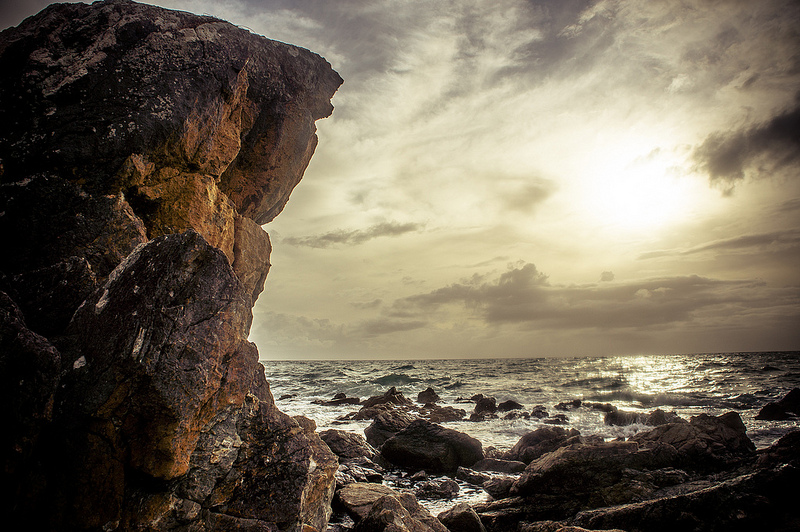If you like this post, help us share it
When it comes to taking landscape photos, have you ever asked yourself these questions?
- What’s the best camera setting?
- Should I use f/11 or f/16?
- Where should I set the focus?
- Should I focus the rocks on the foreground or the mountains at the far end?
Like all kind of photography, there is no such thing as best camera setting. But there are general guidelines that you can follow to set up your camera to give you the best results. In this blog post, we will talk about some of the important aspects for landscape photography.
Before we dig into camera setting, there are some essential items that are useful for landscape photography. If you want to create stunning landscape photos, these items are a must, remote shutter trigger, tripod and filters like GND, ND and CPL. Especially with tripods and filters, they work best together to allow you to drag your shutter for long exposure images. CPL filter is great for landscape, getting rid of the glare and reflection of water. However, if you are shooting anything with the sky, give GND filters a go. Tripod is important if you are shooting in low light, usually after dawn or before sunrise. It allows you to work with a much lower shutter speed while maintaining at a smaller aperture.
Just like any kind of photography, your camera setting is a compromise between ISO, Shutter speed and Aperture. If we consider most landscape photos taken under good weather and bright light, then ideally ISO should be in the lower range; ISO 100 – 400.

Most of the time with landscape photography, we want everything to be in focus, so should we use the smallest aperture f/22? Picture sharpness varies with aperture, for most lenses the sharpest images are often obtained at around f/5.6- f/11. At smaller aperture such as f/16- f/22, image sharpness is constrained by diffraction. So unless you really need to, stay above f/11.
Now an interesting aspect of choosing your aperture is while smaller aperture like f/11 do give you more things in focus, it may not be necessary at all if you understand the concept of Depth of Field (DoF). Basically, DoF is the zone or the range of the recorded scene that is consider sharp (focus). It varies with aperture, sensor size, subject distance and focal length.

If we consider some typical parameters used in landscape photography; say focal length at 24mm for wide angle images, subject distance at 10m. The DoF for the different aperture settings is shown in the below table. What the table tells us is at f/11, the DoF is from 1.45m to infinity, that means, everything in between 1.45m to infinity will be in focus. Compare to f/8, everything in between 1.94m to infinity will be in focus. This tells us:
- With the three aperture settings, the DoF is very wide, it goes all the way to infinity. This is great for landscape.
- The DoF doesn’t change much with the three aperture settings, there is only a meter difference in DoF from f/5.6 to f/11.
- The DoF is wider with DX format and the difference in DoF with different aperture settings is even much less.
In reality, you are not going to notice the difference in DoF, even at f/5.6, the DoF is still very wide. What you might see different is a slight sharper image with f/8 and f/11. At 24mm, shooting at f/5.6 or f/11 makes minimal difference.
| Format | Aperture | Focal Length | Subject Distance | DoF Distance | Hyperfocal Distance |
| FX | f/11 | 24mm | 10m | 1.45m – infinity | 1.72m |
| FX | f/8 | 24mm | 10m | 1.94m – infinity | 2.42m |
| FX | f/5.6 | 24mm | 10m | 2.54m – infinity | 3.42m |
| DX | f/11 | 16mm(~24mm) | 10m | 1.02m – infinity | 1.15m |
| DX | f/8 | 16mm(~24mm) | 10m | 1.38m – infinity | 1.62m |
| DX | f/5.6 | 16mm(~24mm) | 10m | 1.85m – infinity | 2.28m |
The next question is where do I set the focus? To answer this question, the concept of hyperfocal distance is important. If you are not familiar with hyperfocal distance, read about it here. Basically Hyperfocal Distance is the closest distance at which a lens can be focused while keeping objects at infinity acceptably sharp; that is, the focus distance with a maximum depth of field.
Consider the different focus setting in the below table. With a focus distance of 1m, the DoF is only about 1m (0.71m-1.69m), but if you set your focus to 2.42m, the DoF extends to infinity. That is a huge difference by a slight change in focus distance (1m to 2.42m). Focusing past the hyperfocal distance (2.42m), there is not much difference in the DoF whether the focus distance is at 2.42m or 1000m.
So the tip here is, know your lens’ hyperfocal distance and set the focus to hyperfocal distance or at least beyond it. In reality the difference is minimal whether you set the focus to a rock in the foreground (10m) or the trees in the middle (100m) or the objects in the background 1000m away. But ideally, you would focus at 10m rather than 1000m to maximise the DoF.
| Format | Aperture | Focal Length | Focus Distance | DoF Distance | Hyperfocal Distance |
| FX | f/8 | 24mm | 1m | 0.71m – 1.69m | 2.42m |
| FX | f/8 | 24mm | 2.42m (hyperfocal distance) | 1.21m – infinity | 2.42m |
| FX | f/8 | 24mm | 10m | 1.94m – infinity | 2.42m |
| FX | f/8 | 24mm | 100m | 2.34m – infinity | 2.42m |
| FX | f/8 | 24mm | 1000m | 2.39m – infinity | 2.42m |
I took this photo at f/5 and focused at the two big rocks near the front. At this setting, my DoF extends to infinity already.
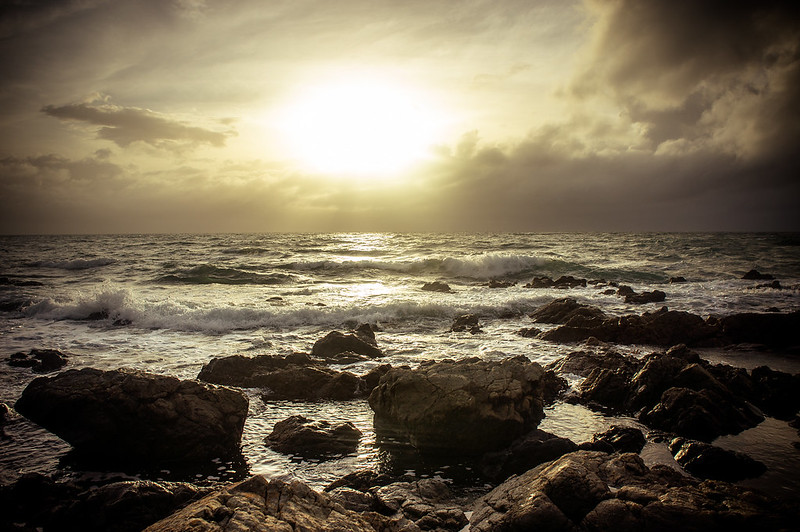
For shutter speed, if you have a tripod then you can get away with any shutter speed. But if you are shooting hand held, use this equation as a guideline to set your minimum shutter speed; Shutter speed = 1/ focal length. For example, if you are shooting at 24mm, then your minimum shutter speed is at 1/24s, but normally I would suggest shooting at at least 1/50s. This concept is suitable for static object only, if you are shooting moving object like ocean or water, then you need to adjust accordingly.
There are times when you are shooting in bright daylight, you will need to watch the shutter speed, too. Most DSLRs offer shutter speed up to 1/8000s, some entry level DSLRs are limited to 1/4000s. If you are hitting this limit in a really bright day or wanting to keep the shutter speed down to match the flash sync speed then consider using ND filters to reduce the light hitting your camera sensor.
Keep the shutter speed to relatively high to freeze action. The below image was taken at 1/1000s.
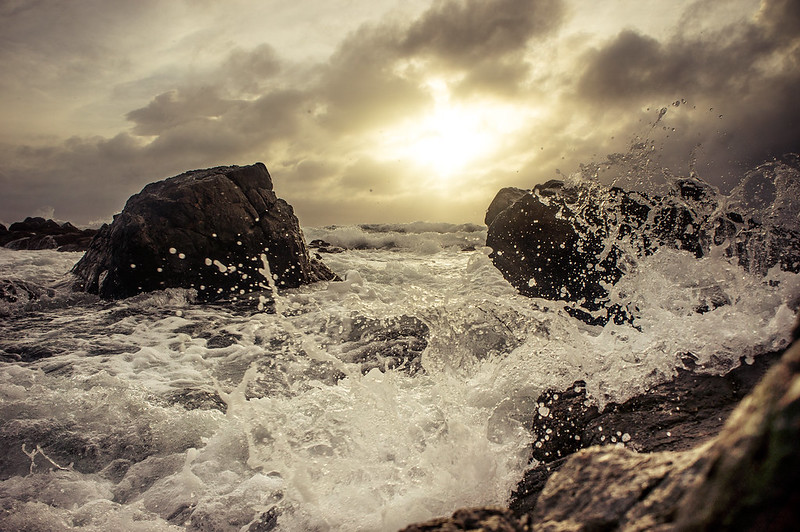
Or drag the shutter to slow down the action.
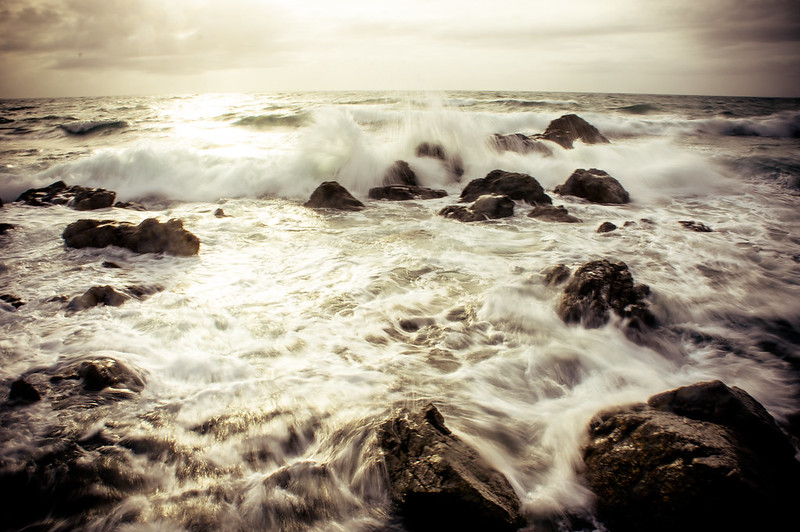
Landscape photography usually shoots with a smaller aperture to maximise the DoF. However, it is important to know that focusing distance also plays a big role in controlling the DoF. Focusing at hyperfocal distance will give you the largest DoF, while focusing past hyperfocal distance will still give you a reasonably wide DoF but focusing before hyperfocal distance will significantly reduce the DoF. When you are focusing at hyperfocal distance or beyond hyperfocal distance, the increase in DoF with smaller aperture is insignificant, but image sharpness does improve with smaller aperture until diffraction issue appears at f/16-f/22.
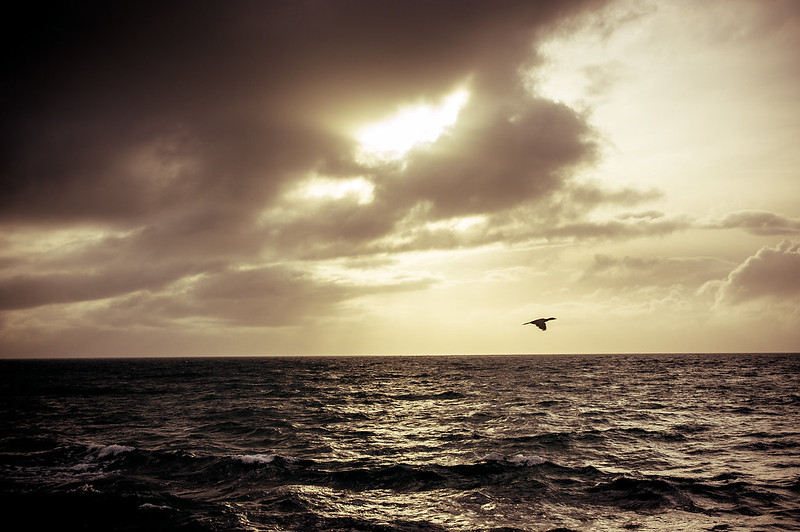
Where can I find the equipment seen on this site?
If you find this site useful and planning to purchase any of the equipment seen on this site, please show your support by purchasing your photo equipment at B&H Photo Video, or through any of the affiliate links seen on this site.


